Farnoush Banaei-Kashani
Department of Computer Science and Engineering, University of Colorado Denver, Denver, USA
BioNeuralNet: A Graph Neural Network based Multi-Omics Network Data Analysis Tool
Jul 27, 2025Abstract:Multi-omics data offer unprecedented insights into complex biological systems, yet their high dimensionality, sparsity, and intricate interactions pose significant analytical challenges. Network-based approaches have advanced multi-omics research by effectively capturing biologically relevant relationships among molecular entities. While these methods are powerful for representing molecular interactions, there remains a need for tools specifically designed to effectively utilize these network representations across diverse downstream analyses. To fulfill this need, we introduce BioNeuralNet, a flexible and modular Python framework tailored for end-to-end network-based multi-omics data analysis. BioNeuralNet leverages Graph Neural Networks (GNNs) to learn biologically meaningful low-dimensional representations from multi-omics networks, converting these complex molecular networks into versatile embeddings. BioNeuralNet supports all major stages of multi-omics network analysis, including several network construction techniques, generation of low-dimensional representations, and a broad range of downstream analytical tasks. Its extensive utilities, including diverse GNN architectures, and compatibility with established Python packages (e.g., scikit-learn, PyTorch, NetworkX), enhance usability and facilitate quick adoption. BioNeuralNet is an open-source, user-friendly, and extensively documented framework designed to support flexible and reproducible multi-omics network analysis in precision medicine.
Assessing Foundation Models for Sea Ice Type Segmentation in Sentinel-1 SAR Imagery
Mar 28, 2025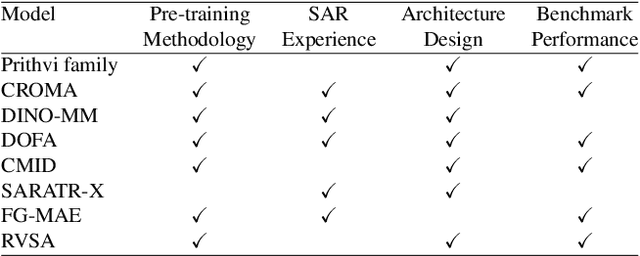
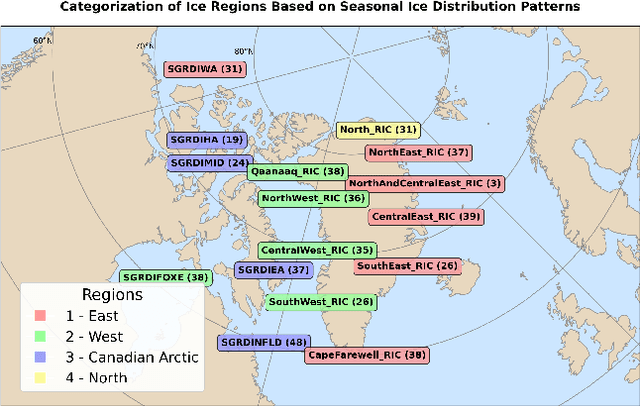
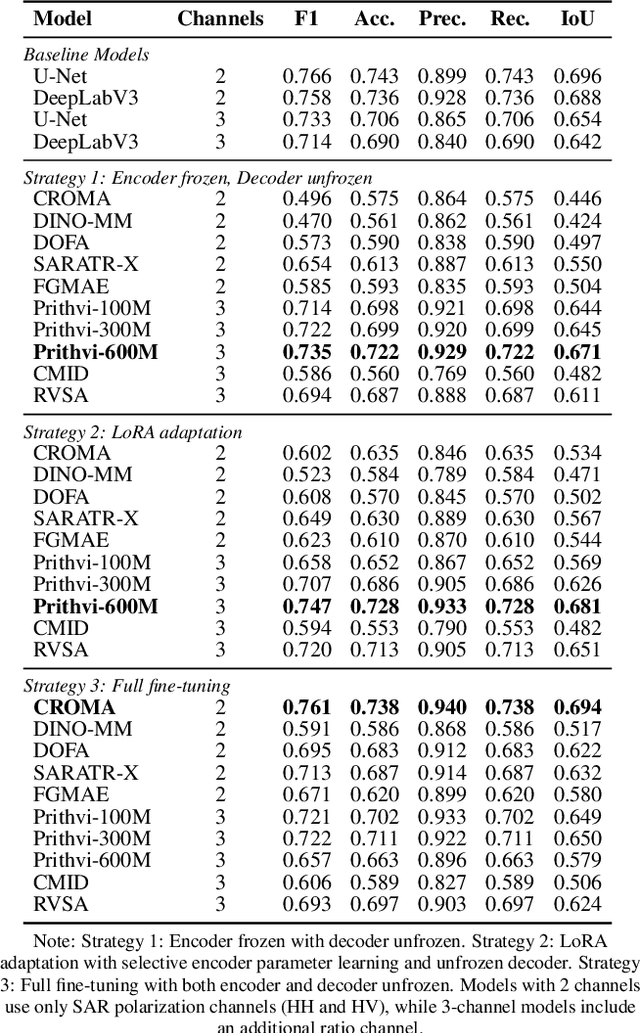
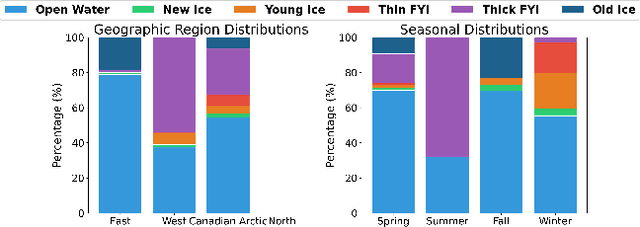
Abstract:Accurate segmentation of sea ice types is essential for mapping and operational forecasting of sea ice conditions for safe navigation and resource extraction in ice-covered waters, as well as for understanding polar climate processes. While deep learning methods have shown promise in automating sea ice segmentation, they often rely on extensive labeled datasets which require expert knowledge and are time-consuming to create. Recently, foundation models (FMs) have shown excellent results for segmenting remote sensing images by utilizing pre-training on large datasets using self-supervised techniques. However, their effectiveness for sea ice segmentation remains unexplored, especially given sea ice's complex structures, seasonal changes, and unique spectral signatures, as well as peculiar Synthetic Aperture Radar (SAR) imagery characteristics including banding and scalloping noise, and varying ice backscatter characteristics, which are often missing in standard remote sensing pre-training datasets. In particular, SAR images over polar regions are acquired using different modes than used to capture the images at lower latitudes by the same sensors that form training datasets for FMs. This study evaluates ten remote sensing FMs for sea ice type segmentation using Sentinel-1 SAR imagery, focusing on their seasonal and spatial generalization. Among the selected models, Prithvi-600M outperforms the baseline models, while CROMA achieves a very similar performance in F1-score. Our contributions include offering a systematic methodology for selecting FMs for sea ice data analysis, a comprehensive benchmarking study on performances of FMs for sea ice segmentation with tailored performance metrics, and insights into existing gaps and future directions for improving domain-specific models in polar applications using SAR data.
Partial Label Learning with Focal Loss for Sea Ice Classification Based on Ice Charts
Jun 05, 2024



Abstract:Sea ice, crucial to the Arctic and Earth's climate, requires consistent monitoring and high-resolution mapping. Manual sea ice mapping, however, is time-consuming and subjective, prompting the need for automated deep learning-based classification approaches. However, training these algorithms is challenging because expert-generated ice charts, commonly used as training data, do not map single ice types but instead map polygons with multiple ice types. Moreover, the distribution of various ice types in these charts is frequently imbalanced, resulting in a performance bias towards the dominant class. In this paper, we present a novel GeoAI approach to training sea ice classification by formalizing it as a partial label learning task with explicit confidence scores to address multiple labels and class imbalance. We treat the polygon-level labels as candidate partial labels, assign the corresponding ice concentrations as confidence scores to each candidate label, and integrate them with focal loss to train a Convolutional Neural Network (CNN). Our proposed approach leads to enhanced performance for sea ice classification in Sentinel-1 dual-polarized SAR images, improving classification accuracy (from 87% to 92%) and weighted average F-1 score (from 90% to 93%) compared to the conventional training approach of using one-hot encoded labels and Categorical Cross-Entropy loss. It also improves the F-1 score in 4 out of the 6 sea ice classes.
Bridging the Gap between Artificial Intelligence and Artificial General Intelligence: A Ten Commandment Framework for Human-Like Intelligence
Oct 17, 2022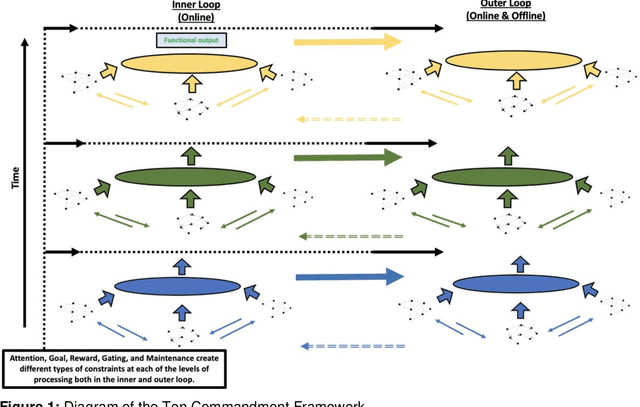
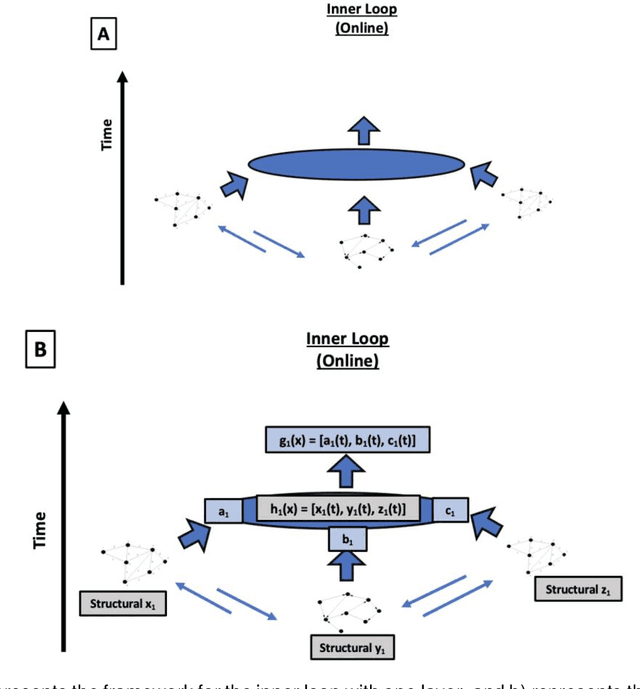
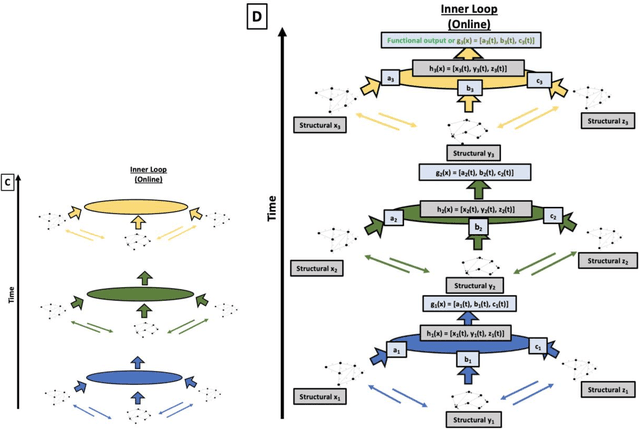

Abstract:The field of artificial intelligence has seen explosive growth and exponential success. The last phase of development showcased deep learnings ability to solve a variety of difficult problems across a multitude of domains. Many of these networks met and exceeded human benchmarks by becoming experts in the domains in which they are trained. Though the successes of artificial intelligence have begun to overshadow its failures, there is still much that separates current artificial intelligence tools from becoming the exceptional general learners that humans are. In this paper, we identify the ten commandments upon which human intelligence is systematically and hierarchically built. We believe these commandments work collectively to serve as the essential ingredients that lead to the emergence of higher-order cognition and intelligence. This paper discusses a computational framework that could house these ten commandments and suggests new architectural modifications that could lead to the development of smarter, more explainable, and generalizable artificial systems inspired by a neuromorphic approach.
 Add to Chrome
Add to Chrome Add to Firefox
Add to Firefox Add to Edge
Add to Edge